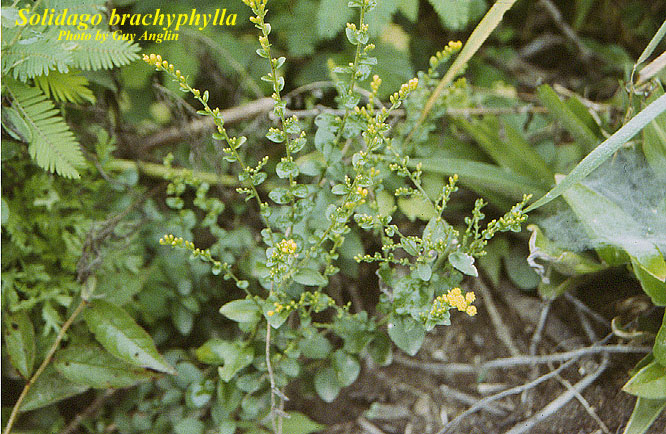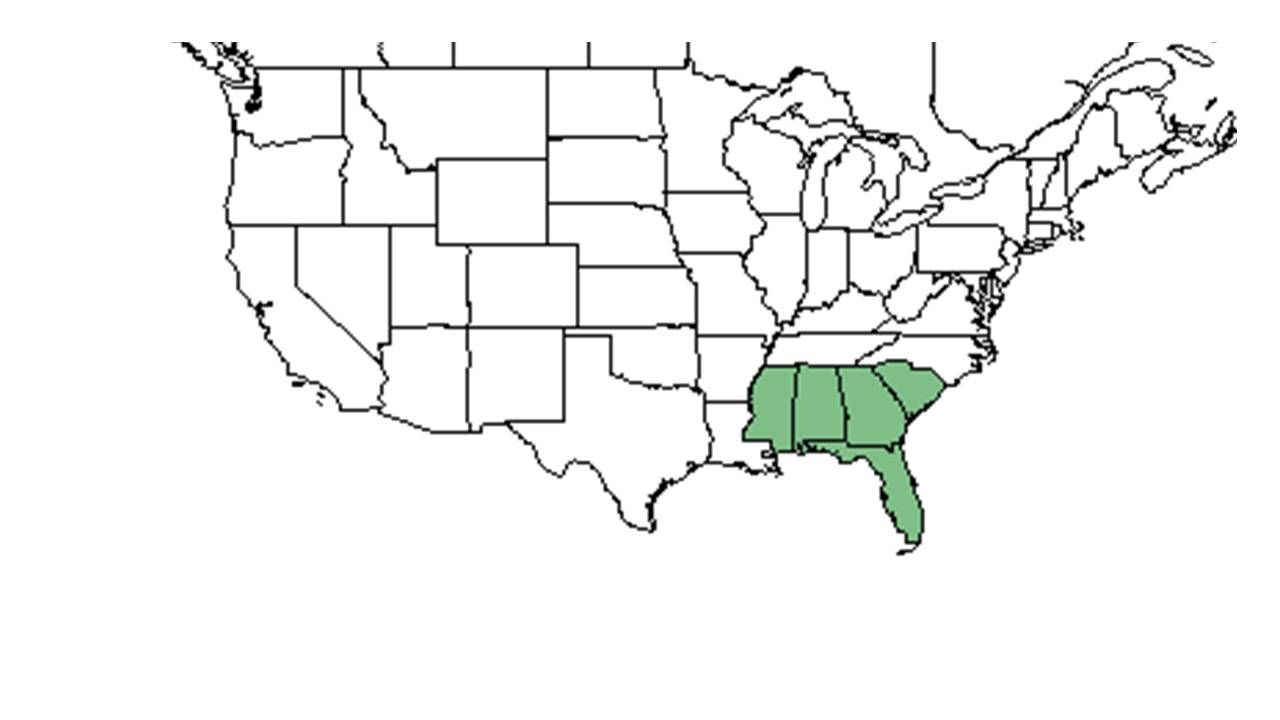Difference between revisions of "Solidago brachyphylla"
| Line 27: | Line 27: | ||
==Ecology== | ==Ecology== | ||
===Habitat=== <!--Natural communities, human disturbed habitats, topography, hydrology, soils, light, fire regime requirements for removal of competition, etc.--> | ===Habitat=== <!--Natural communities, human disturbed habitats, topography, hydrology, soils, light, fire regime requirements for removal of competition, etc.--> | ||
| − | In the Coastal Plain in Florida, ''S. brachyphylla'' has been found in wet woods; semi-shaded roadside in xeric oak woodland on ridge bordering river; amongst scattered titi along edge of small seepage slope bog; edge of wooded bluff slope near river bank; oak-pine uplands; oak-pine-hickory uplands; shortleaf/mixed hardwood forest; between hardwood forest of bayhead ravine and longleaf pine-wiregrass sand ridge; and a scrub course.<ref name="FSU Herbarium">Florida State University Robert K. Godfrey Herbarium database. URL: [http://herbarium.bio.fsu.edu http://herbarium.bio.fsu.edu]. Last accessed: July 2015. Collectors: Ed Keppner, Lisa Keppner, Loran C. Anderson, Deborah Paul, R. S. Blaisdell, Richard S. Mitchell, R. Kral, A. F. Clewell, Gary R. Knight, R.K. Godfrey, Angus Gholson, Wilson Baker, Angela M. Reid, K. M. Robertson. States and Counties: Florida: Bay, Gadsden, Jackson, Leon, Liberty, Okaloosa, Santa Rosa. Compiled by Tall Timbers Research Station and Land Conservancy.</ref> It has also been found in open picnic areas, open fields, and edges of golf courses. Soil types include loamy sand, sandy loam, and loamy soil.<ref name="FSU Herbarium"/> Associated species include ''Solidago nemoralis, S. boottii'', and ''S. petiolaris.''<ref name="FSU Herbarium"/> | + | In the Coastal Plain in Florida, ''S. brachyphylla'' has been found in wet woods; semi-shaded roadside in xeric oak woodland on ridge bordering river; amongst scattered titi along edge of small seepage slope bog; edge of wooded bluff slope near river bank; oak-pine uplands; oak-pine-hickory uplands; shortleaf/mixed hardwood forest; between hardwood forest of bayhead ravine and longleaf pine-wiregrass sand ridge; and a scrub course.<ref name="FSU Herbarium">Florida State University Robert K. Godfrey Herbarium database. URL: [http://herbarium.bio.fsu.edu http://herbarium.bio.fsu.edu]. Last accessed: July 2015. Collectors: Ed Keppner, Lisa Keppner, Loran C. Anderson, Deborah Paul, R. S. Blaisdell, Richard S. Mitchell, R. Kral, A. F. Clewell, Gary R. Knight, R.K. Godfrey, Angus Gholson, Wilson Baker, Angela M. Reid, K. M. Robertson. States and Counties: Florida: Bay, Gadsden, Jackson, Leon, Liberty, Okaloosa, Santa Rosa. Compiled by Tall Timbers Research Station and Land Conservancy.</ref> It has also been found in open picnic areas, open fields, and edges of golf courses. Soil types include loamy sand, sandy loam, and loamy soil.<ref name="FSU Herbarium"/> |
| + | |||
| + | Associated species include ''Solidago nemoralis, S. boottii'', and ''S. petiolaris.''<ref name="FSU Herbarium"/> | ||
===Phenology=== <!--Timing off flowering, fruiting, seed dispersal, and environmental triggers. Cite PanFlora website if appropriate: http://www.gilnelson.com/PanFlora/ --> | ===Phenology=== <!--Timing off flowering, fruiting, seed dispersal, and environmental triggers. Cite PanFlora website if appropriate: http://www.gilnelson.com/PanFlora/ --> | ||
Revision as of 19:00, 21 June 2021
| Solidago brachyphylla | |
|---|---|

| |
| Photo by Guy Anglin, Atlas of Florida Vascular Plants | |
| Scientific classification | |
| Kingdom: | Plantae |
| Division: | Magnoliophyta – Flowering plants |
| Class: | Magnoliopsida – Dicotyledons |
| Order: | Asterales |
| Family: | Asteraceae ⁄ Compositae |
| Genus: | Solidago |
| Species: | S. brachyphylla |
| Binomial name | |
| Solidago brachyphylla Chapm. ex Torr. & A. Gray | |

| |
| Natural range of Solidago brachyphylla from USDA NRCS Plants Database. | |
Common name: Dixie goldenrod
Contents
Taxonomic notes
Description
A description of Solidago brachyphylla is provided in The Flora of North America.
Distribution
Ecology
Habitat
In the Coastal Plain in Florida, S. brachyphylla has been found in wet woods; semi-shaded roadside in xeric oak woodland on ridge bordering river; amongst scattered titi along edge of small seepage slope bog; edge of wooded bluff slope near river bank; oak-pine uplands; oak-pine-hickory uplands; shortleaf/mixed hardwood forest; between hardwood forest of bayhead ravine and longleaf pine-wiregrass sand ridge; and a scrub course.[1] It has also been found in open picnic areas, open fields, and edges of golf courses. Soil types include loamy sand, sandy loam, and loamy soil.[1]
Associated species include Solidago nemoralis, S. boottii, and S. petiolaris.[1]
Phenology
S. brachyphylla has been recorded to flower in August and November.[1]
Conservation, cultivation, and restoration
Cultural use
Photo Gallery
References and notes
- ↑ 1.0 1.1 1.2 1.3 Florida State University Robert K. Godfrey Herbarium database. URL: http://herbarium.bio.fsu.edu. Last accessed: July 2015. Collectors: Ed Keppner, Lisa Keppner, Loran C. Anderson, Deborah Paul, R. S. Blaisdell, Richard S. Mitchell, R. Kral, A. F. Clewell, Gary R. Knight, R.K. Godfrey, Angus Gholson, Wilson Baker, Angela M. Reid, K. M. Robertson. States and Counties: Florida: Bay, Gadsden, Jackson, Leon, Liberty, Okaloosa, Santa Rosa. Compiled by Tall Timbers Research Station and Land Conservancy.